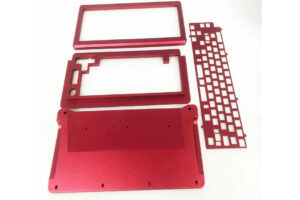CNC Prototype Service Manufacturer in China – High Precision & Fast Turnaround
Premium CNC Prototype Services for Rapid Product Development
 As a leading CNC prototype service manufacturer in China, we specialize in high-precision, fast-turnaround prototyping for industries such as aerospace, automotive, medical, electronics, and robotics. Our advanced CNC machining, multi-axis milling & turning, and expert finishing services ensure your prototypes meet the strictest quality standards before mass production.
As a leading CNC prototype service manufacturer in China, we specialize in high-precision, fast-turnaround prototyping for industries such as aerospace, automotive, medical, electronics, and robotics. Our advanced CNC machining, multi-axis milling & turning, and expert finishing services ensure your prototypes meet the strictest quality standards before mass production.
Why Choose Our CNC Prototype Services?
✔ Fast Lead Times – Get prototypes in as little as 3-5 days
✔ Tight Tolerances – ±0.005mm precision machining
✔ Wide Material Selection – Metals, plastics, and exotic alloys
✔ Custom Finishing Options – Anodizing, plating, laser engraving & more
✔ One-Stop Prototyping Solution – From design to final product
Materials for CNC Prototyping
We machine a wide range of materials to meet diverse prototyping needs:
Metals
- Aluminum (6061, 7075, 5052) – Lightweight & high strength
- Stainless Steel (303, 304, 316, 17-4PH) – Corrosion-resistant
- Brass & Bronze (C360, H62, C932) – Excellent machinability
- Copper – Superior electrical & thermal conductivity
- Titanium (Grade 2, Grade 5) – High strength-to-weight ratio
- Tool Steel & Alloys (4140, SCM440) – Extreme durability
Plastics & Engineering Polymers
- ABS, PC, POM (Acetal), Nylon (PA), PEEK
- PMMA (Acrylic), PTFE (Teflon), PVC, PU
Surface Finishing Options for CNC Prototypes
Enhance functionality and aesthetics with our professional surface treatments:
- Anodizing (Type II & Type III for aluminum)
- Plating (Nickel, Zinc, Chrome, Gold, PVD)
- Polishing & Buffing – Mirror or satin finishes
- Sandblasting & Bead Blasting – Matte texture
- Laser Engraving & Marking – Permanent branding
- Powder Coating & Spray Painting – Custom colors
- Heat Treatment – Annealing, tempering, hardening
- Oxide Black & Passivation – Improved corrosion resistance
High-Precision Tolerance & Custom Sizes
- Standard Tolerance: ±0.01mm
- High-Precision Tolerance: ±0.005mm (for critical applications)
- Custom Sizes: Prototypes made to exact design specifications
- Complex Geometries: 3-axis, 4-axis & 5-axis CNC machining
Industries We Serve
Our CNC prototypes are used in:
🔹 Aerospace & UAVs – Lightweight, high-strength components
🔹 Automotive & Motorsports – Precision-engineered parts
🔹 Medical Devices – Biocompatible, sterilizable prototypes
🔹 Electronics & IoT – Enclosures, heat sinks, connectors
🔹 Robotics & Automation – High-tolerance mechanical parts
🔹 Consumer Products – Wearables, smart devices, housings
Accepted File Formats
Submit your designs in:
📄 STEP, IGS, X_T, DWG, DXF, PDF, STL, OBJ
📄 SolidWorks, Pro/E, AutoCAD, Fusion 360
Get a Free CNC Prototype Quote Today!
✅ Fast & Accurate Prototyping
✅ Competitive Pricing & Low MOQ
✅ ISO-Certified Quality Control
✅ 24/7 Engineering Support
Contact us now to discuss your CNC prototype project and receive a free DFM analysis & quote within 24 hours!






